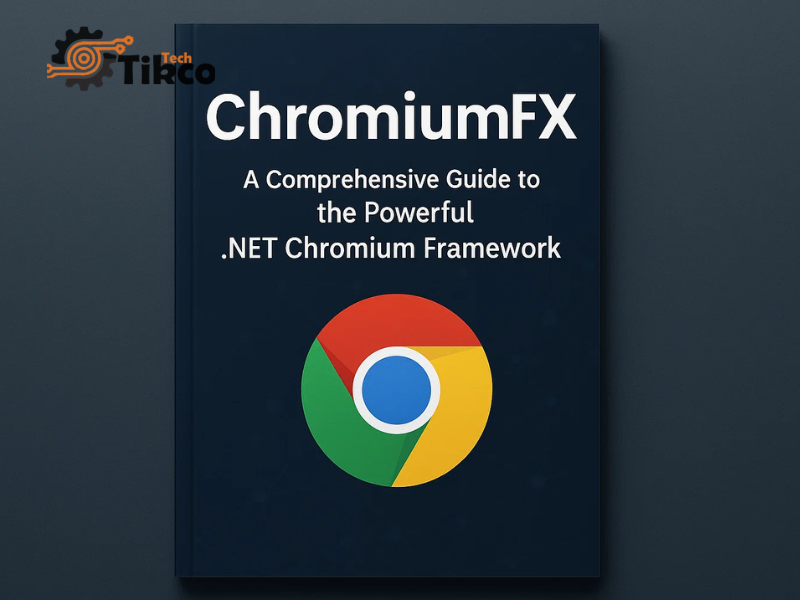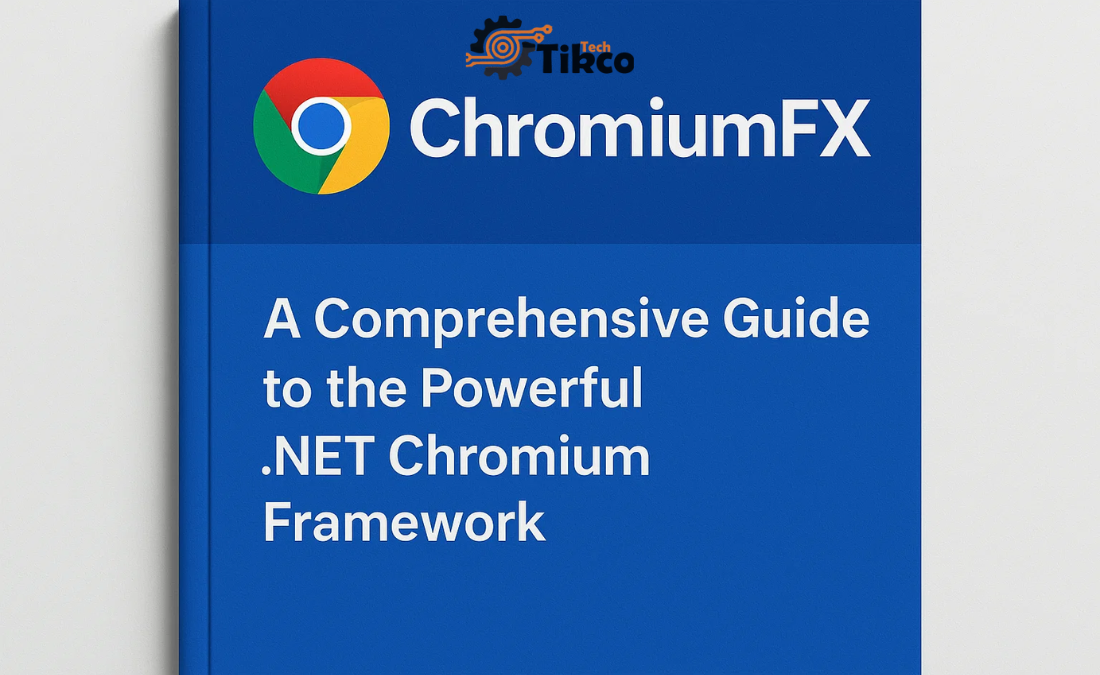When it comes to developing high-performance web browsers or embedding modern web capabilities into desktop applications, ChromiumFX stands out as one of the most robust and flexible frameworks for .NET developers. Built upon the Chromium Embedded Framework (CEF), ChromiumFX allows developers to integrate web technologies such as HTML5, CSS3, and JavaScript into C# and .NET applications efficiently.
This article explores ChromiumFX in detail — from its features and architecture to installation, usage, and benefits — and concludes with why it remains a top choice for developers who seek to bridge the gap between desktop and web technologies.
What is ChromiumFX?
ChromiumFX is an open-source .NET wrapper around the Chromium Embedded Framework (CEF), which is itself a simplified framework built on the Chromium web browser project (the same engine behind Google Chrome). It enables developers to embed a Chromium-based web browser into Windows applications using .NET languages such as C# and VB.NET.
Essentially, ChromiumFX allows .NET applications to render modern web content using the same engine that powers Chrome, ensuring full compatibility with the latest web standards. This makes it an excellent choice for developers who need web rendering or web-based UI components within desktop software.
The Architecture of ChromiumFX
To understand how ChromiumFX operates, it’s useful to know its underlying architecture:
- Chromium Engine (Base Layer) – The foundation is the Chromium browser engine, providing web rendering and JavaScript execution capabilities.
- Chromium Embedded Framework (CEF) – Acts as a C++ layer that exposes Chromium features to external applications.
- ChromiumFX Wrapper (C# Layer) – A .NET wrapper built on top of CEF, exposing its functionalities in a .NET-friendly environment.
- Application Layer – The developer’s code, where .NET applications use ChromiumFX to load and interact with web pages.
This layered architecture ensures performance, stability, and flexibility, allowing seamless communication between native C++ code and managed .NET code.
Why Developers Choose ChromiumFX
Developers working in the .NET environment have several options when it comes to integrating web content, but ChromiumFX offers unique advantages that make it stand out:
1. Modern Web Compatibility
Since ChromiumFX is built on Chromium, it supports the latest web technologies including HTML5, CSS3, WebGL, and advanced JavaScript APIs. This ensures that embedded web content looks and behaves just like it would in Google Chrome.
2. High Performance
Unlike older web embedding frameworks such as Internet Explorer’s WebBrowser control, ChromiumFX delivers much faster rendering, smoother animations, and more stable execution, thanks to Chromium’s optimized multi-process architecture.
3. Cross-Language and Cross-Platform Potential
While primarily focused on Windows and .NET, ChromiumFX opens the door for integration with cross-platform frameworks through .NET Core or .NET 6+, potentially enabling use on macOS and Linux systems.
4. Secure Sandboxing
Security is crucial for web content rendering, and ChromiumFX inherits Chromium’s sandboxing capabilities. This means each web process runs in isolation, reducing the risk of malicious code affecting the host application.
5. Full Control Over Web Interaction
Developers can easily manipulate web pages via JavaScript, intercept network requests, modify headers, and inject custom scripts directly through ChromiumFX’s APIs. This allows for deep integration and customization of web content behavior.
Key Features of ChromiumFX
1. Embedding a Full Chromium Browser
With just a few lines of C# code, you can embed a fully functional Chromium browser into your desktop application. Users can navigate, interact, and use web apps as if they were in Chrome itself.
2. JavaScript Integration
ChromiumFX allows two-way communication between C# and JavaScript. Developers can:
- Execute JavaScript functions from C#
- Retrieve return values from JavaScript
- Expose C# methods to be called from web scripts
3. Custom Request Handling
Intercept and modify HTTP/HTTPS requests before they reach the server. This is helpful for:
- Debugging
- Adding authentication headers
- Implementing caching or proxy logic
4. UI Customization
Developers can modify the browser’s behavior and appearance — from disabling the address bar to hiding scrollbars or enabling developer tools.
5. Multi-Process Architecture
Each tab or instance runs as an isolated process. If one crashes, it doesn’t bring down the entire application, ensuring better stability.
Installing and Setting Up ChromiumFX
Getting started with ChromiumFX requires a few setup steps. Below is a simplified guide to installation and initialization:
Step 1: Download ChromiumFX
You can obtain ChromiumFX from its GitHub repository or official distribution sources. It often comes as a Visual Studio-compatible package.
Step 2: Add References
Include the following DLLs in your .NET project:
ChromiumFX.dllChromiumWebBrowser.dllcef.dlland related Chromium dependencies
Step 3: Initialize Chromium
Before creating a browser instance, initialize the CEF runtime:
CfxRuntime.LibCefDirPath = "path_to_cef_binaries";
CfxRuntime.Load();
CfxRuntime.Initialize();
Step 4: Create a Chromium Browser Instance
You can then create a browser view within a Windows Form:
var browser = new ChromiumWebBrowser("https://www.example.com");
this.Controls.Add(browser);
browser.Dock = DockStyle.Fill;
Step 5: Run and Test
Once compiled and executed, your .NET application will display a Chromium-powered browser capable of loading any website.

Practical Applications of ChromiumFX
ChromiumFX is used in many software scenarios where web and desktop technologies intersect. Here are some examples:
1. Web-Based Desktop Applications
Developers can build hybrid applications using web frontends and C# backends — for instance, dashboards, CRM tools, or admin panels.
2. Browser-Based Tools
Tools like IDEs, testing environments, or automation systems can integrate web content for documentation, tutorials, or visualization.
3. Kiosk Applications
Public terminals or point-of-sale systems can use ChromiumFX to render controlled web interfaces with restricted navigation.
4. Game Launchers and Clients
Gaming companies often embed web-based shops or update panels into launchers using ChromiumFX.
5. Data Visualization
Developers can use web-based visualization libraries like D3.js or Chart.js within desktop software to display real-time data.
Advantages and Limitations of ChromiumFX
Advantages:
- Access to cutting-edge web features
- Excellent performance and stability
- Seamless .NET integration
- High-level customization of browser behavior
- Robust JavaScript interaction support
Limitations:
- Large binary size due to Chromium dependencies
- Complex setup for beginners
- Limited official documentation
- High memory usage compared to simpler web controls
Despite these limitations, ChromiumFX remains one of the most powerful and future-proof options for integrating modern web technology into desktop applications.
ChromiumFX vs Alternatives
When comparing ChromiumFX with other frameworks, it’s helpful to understand how it stacks up:
| Feature | ChromiumFX | CefSharp | WebView2 |
|---|---|---|---|
| Rendering Engine | Chromium | Chromium | Edge (Chromium) |
| Language | C#/.NET | C#/.NET | C#/.NET |
| Platform | Windows (.NET Framework/Core) | Windows | Windows |
| Ease of Setup | Moderate | Easy | Very Easy |
| Performance | High | High | Moderate |
| Open Source | Yes | Yes | No (partly proprietary) |
ChromiumFX offers more granular control compared to CefSharp, though it may require more configuration. Developers seeking the most flexibility and power typically favor ChromiumFX, while those preferring simplicity may choose WebView2.
Future of ChromiumFX
With the continuous evolution of the .NET ecosystem and Chromium itself, ChromiumFX continues to adapt. It remains highly relevant for developers who value performance, stability, and modern web capabilities in their desktop apps.
There is also growing interest in integrating ChromiumFX with cross-platform technologies such as Avalonia or .NET MAUI, potentially extending its reach beyond Windows.
Conclusion: Why ChromiumFX Matters
In summary, ChromiumFX serves as a bridge between traditional desktop development and the modern web world. By leveraging the power of Chromium and the flexibility of .NET, developers can create applications that are both visually dynamic and functionally robust.
Whether you’re developing a hybrid desktop app, a secure kiosk interface, or a professional browser-based tool, ChromiumFX provides the performance and control necessary to achieve professional results. Its combination of speed, security, and flexibility ensures it will remain a key technology for advanced desktop application development for years to come.




